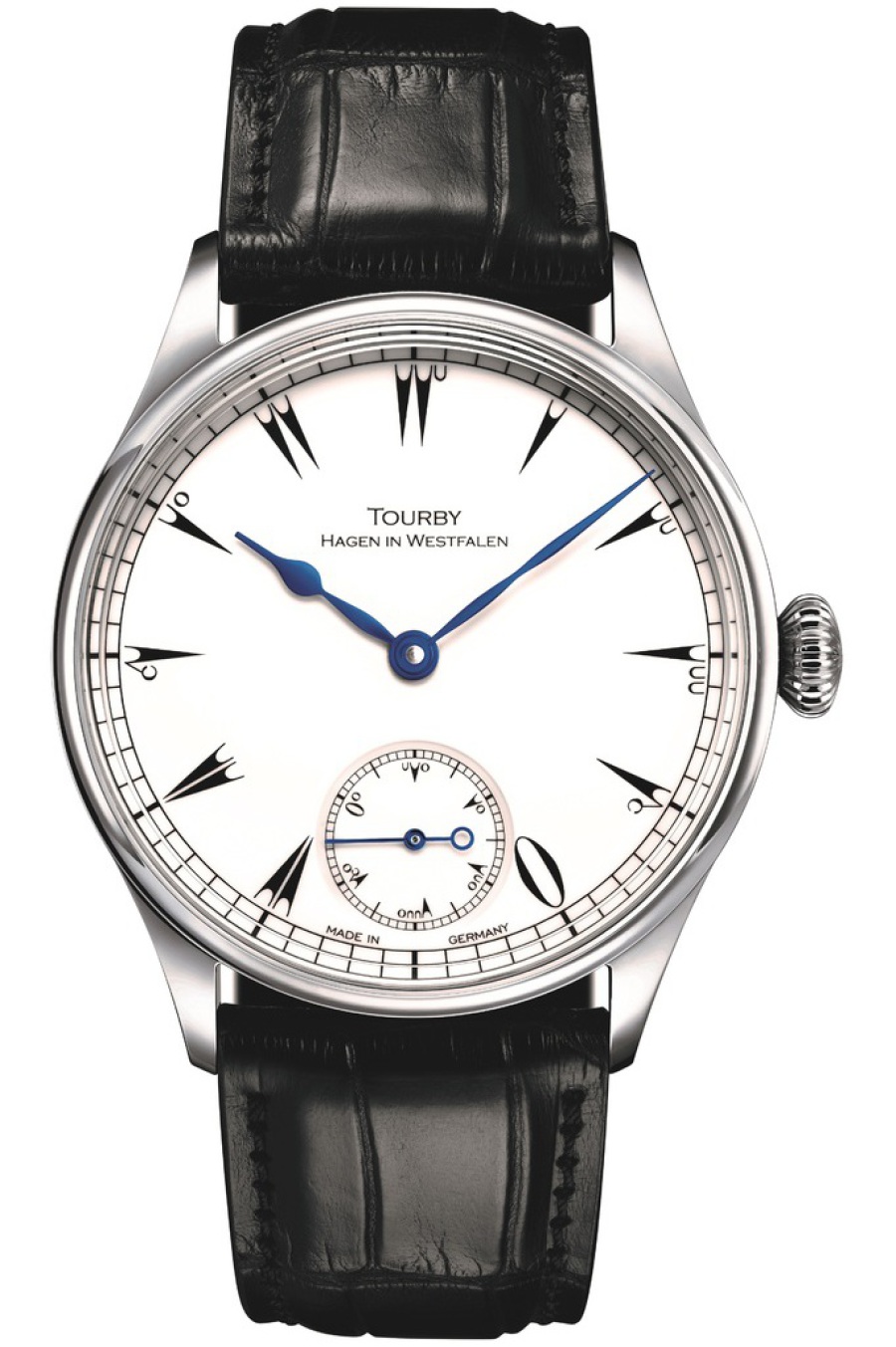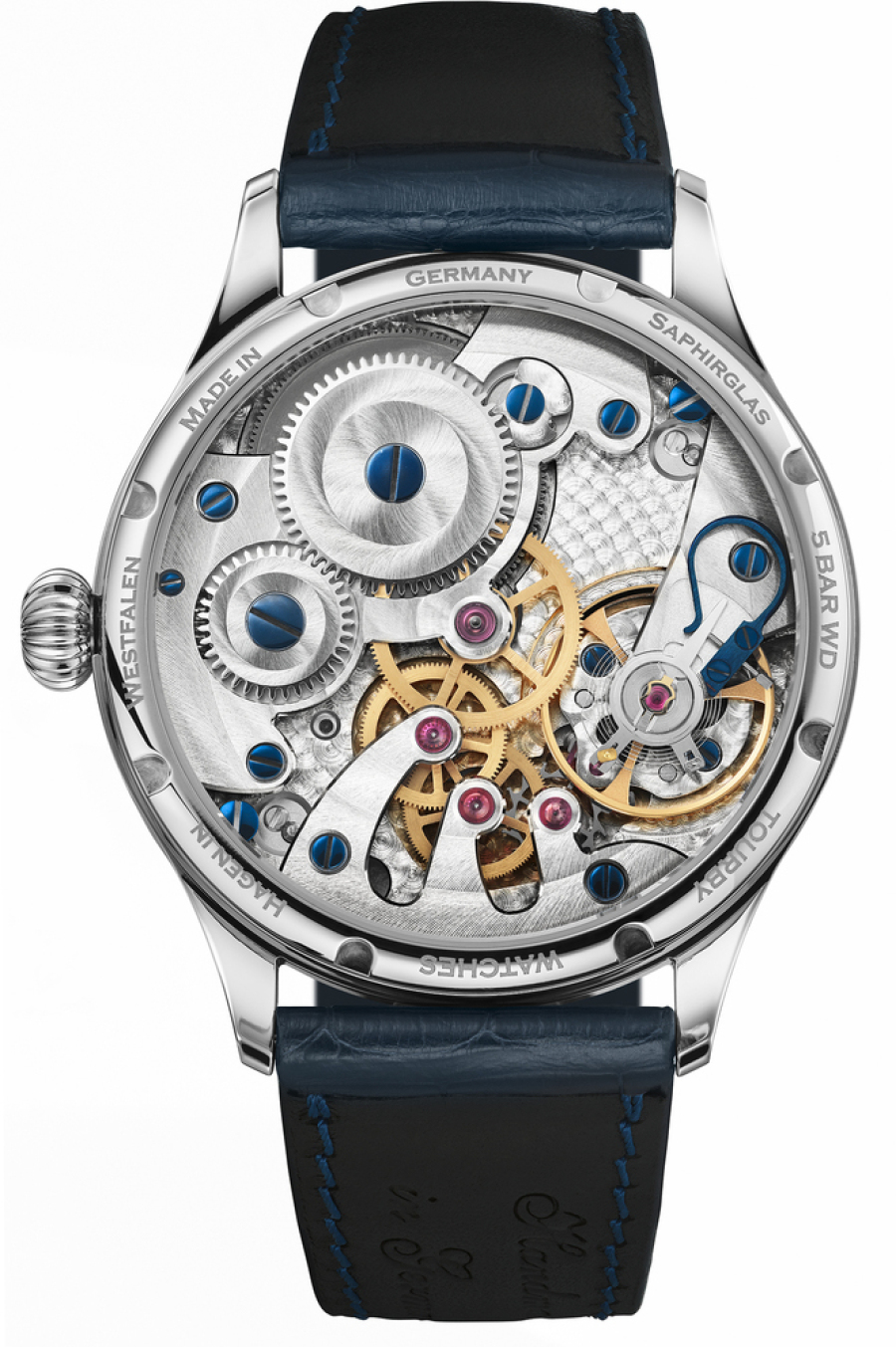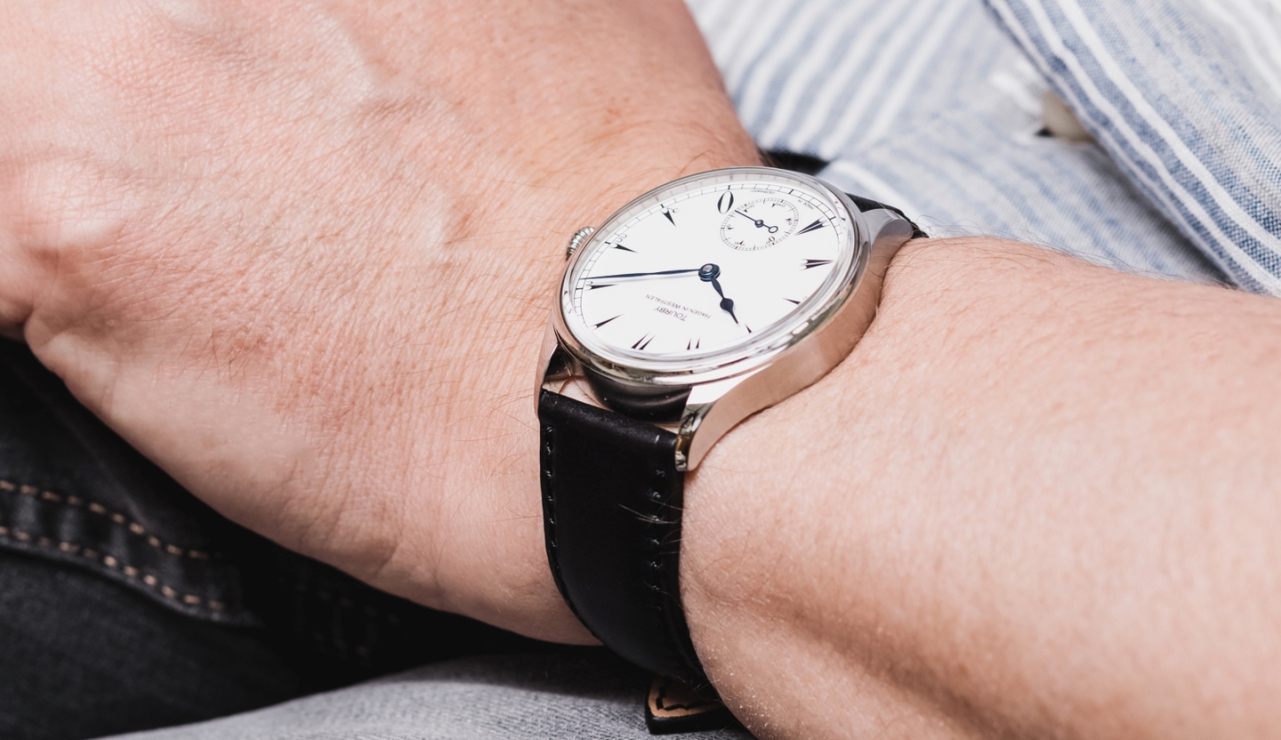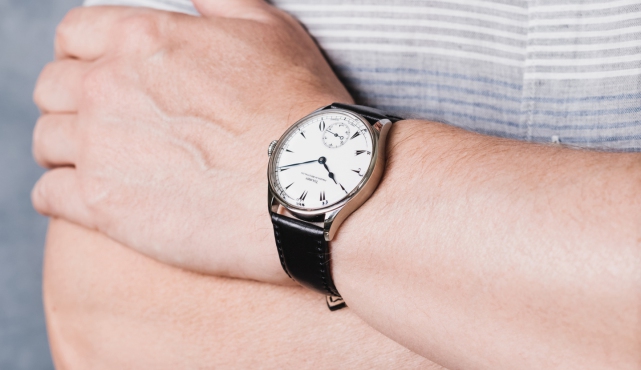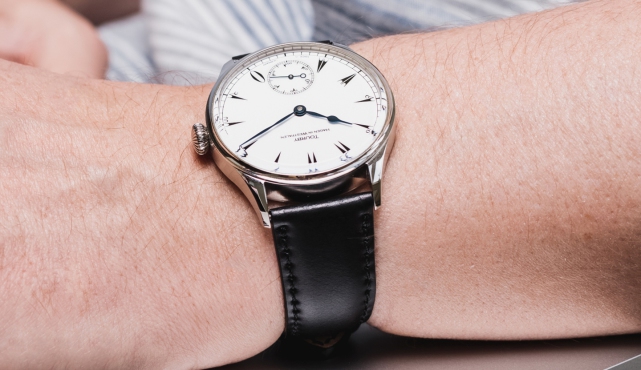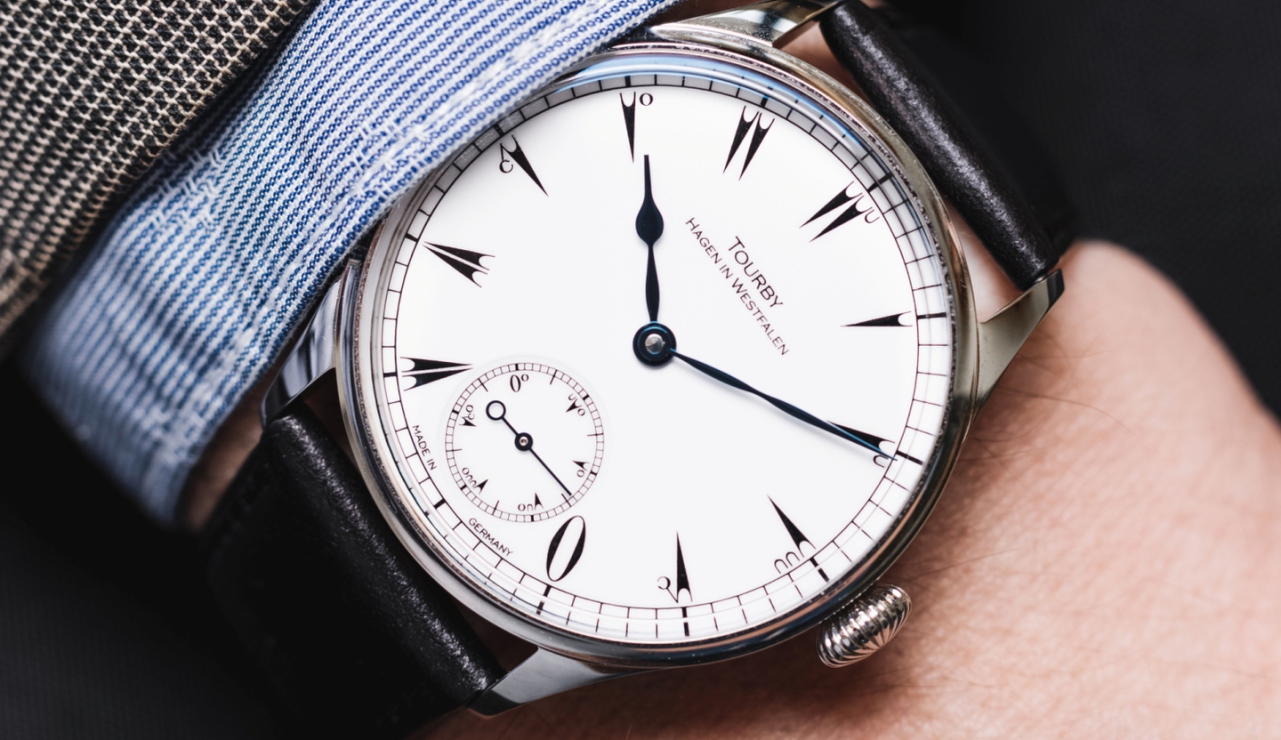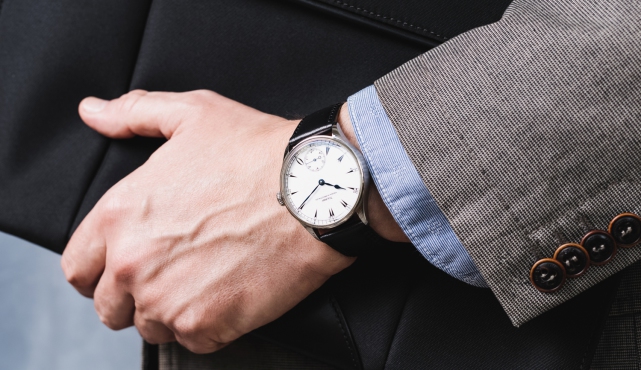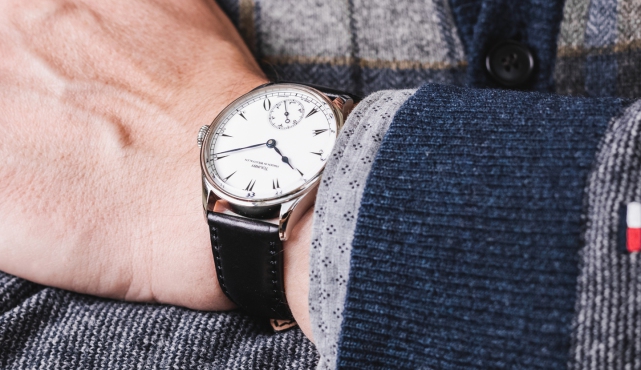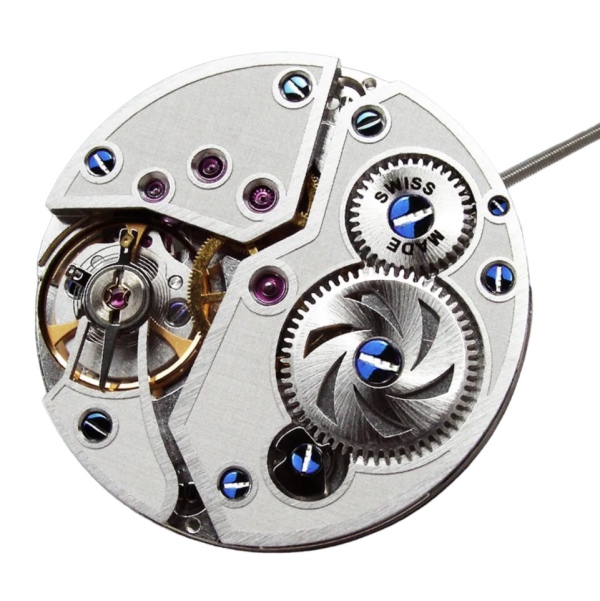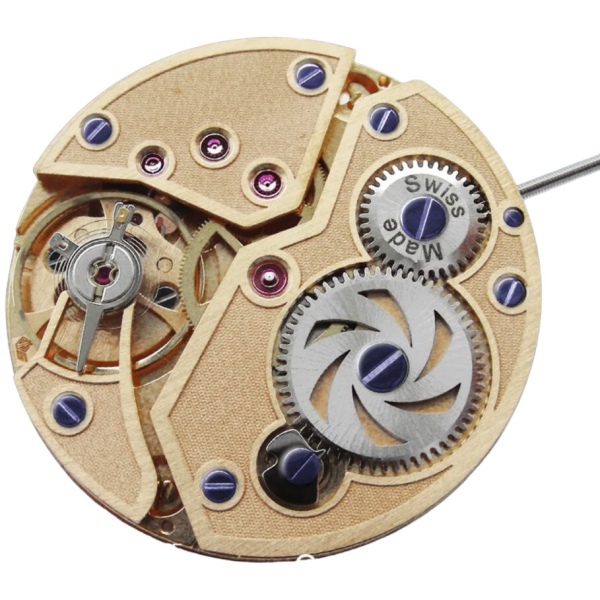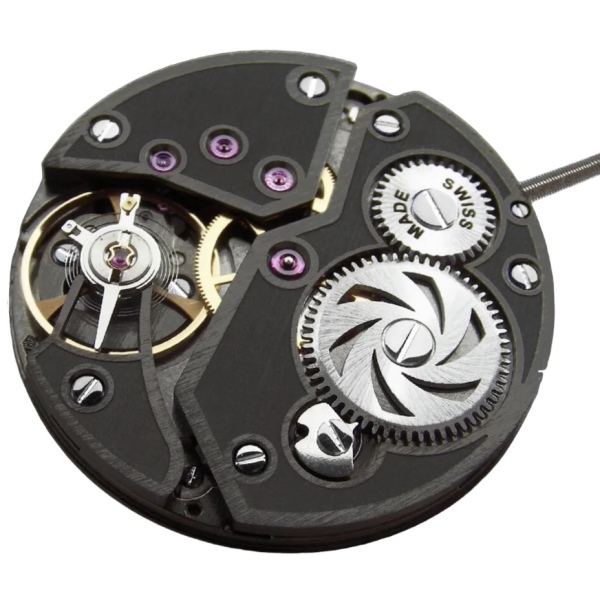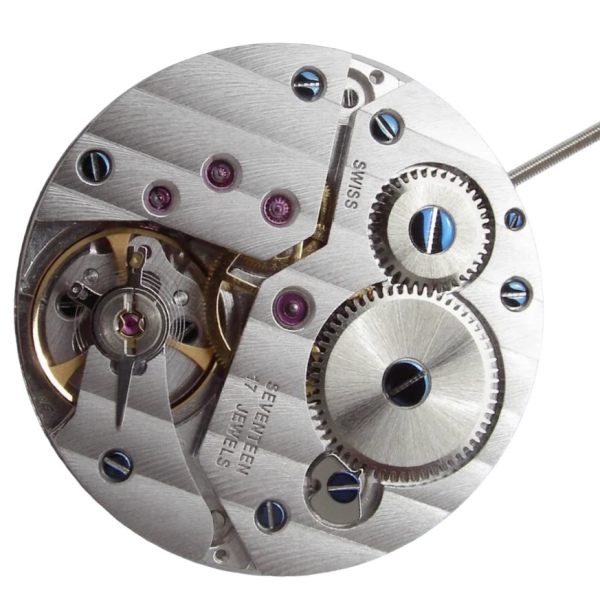Available in three sizes: 40 mm, 43 mm or 45 mm - Price from 2,075.00 Euro
Tourby builds on the centuries-old tradition of Ottoman pocket watches, giving Ottoman numerals a renaissance. This individual design with the use of Ottoman numerals
is registered by Tourby Watches as a design patent at the patent office in Munich and is monitored by lawyers. The Ottoman Enamel models come with a stainless steel case in the sizes 40 mm, 43 mm or
45 mm. The top ring is provided with an extremely robust sapphire crystal, which with a Mohs hardness of 9 is the second hardest of all transparent materials after diamond. The crystal is curved at
the edge and anti-reflective on the inside. The dial is made of genuine 925/000 sterling silver with an enamel coating. The dial is made by a well-known traditional German company for Tourby. The
hands are made of temperature-blued stainless steel. Only a few hand manufacturers are still able to produce such high-quality steel hands today. The straps are made of genuine Louisiana alligator
skin or cordovan to match the elegant watches. The straps are held by a pin buckle, a folding clasp is optionally available for an additional charge. Each Tourby watch is delivered in a very
high-quality and robust travel leather box.
Specifications:
manufactured watch case
wristwatches in vintage pocket-watch design
40 mm, 43 mm or 45 mm diamter
10.4 mm, 10.6 mm or 14.45 mm thickness (incl. domes crystal)
48 mm, 50 mm or 52 mm lug to lug
22 mm strap wide
5 ATM water resistant
watch case in stainless steel
Swiss made manual wind movement (based on ETA Unitas 6498-2)
17 Jewels, 21.600 A/h beats per hour, power reserve 60 h
fine adjusted in 5 positions
Precision -2/+8 sec/day, after casing
Properly refined according to highest watchmaking standards
genuine 925/000 Sterling silver face
enamel lacquer with old turkish "Ottoman" numbers
Domed and anti-reflected sapphire glass on front
Sapphire display case back
Stainless steel clasp
Watch straps made of genuine Louisiana alligator skin
Shipped in an attractive travel Leather case
anti-shock proof (DIN standard 8308)
antimagnetic 4,800 A (DIN standard 8309)
**** free shipping worldwide***
Delivery time within 4 weeks
Price (NET excluded VAT):
Ottoman Enamel Basic with Cordovan Leather strap *
2,075.00 Euro
*Upgrade Top Grade Movement + 800.00
Euro
Extras: (Please click on the text for more informations):
genuine alligator skin strap + 75.00 Euro
Change to straight crown * free of
charge
Folding clasp + 75.00 Euro
43 mm rose gold plated watch case (very robust PVD plating) + 200.00 Euro
Large presentation-wooden box + 300.00 Euro
(The watch in the video is a prototype with a
different movement)
The tradition to manufacture watches for the Turkish market, dates back to the 17th century. Often precious copies were presented to statesman. Today you can
see a comprehensive collection in the Topkapi Sarayi Museum in Istanbul. In order to be successful in Turkey, the former Ottoman Empire, the watches had to match the Turkish style. The French
watchmaker Abraham Louis Breguet and Julien LeRoy had built in the 17th century their famous mechanical marvels with Ottoman figures. The French used a lot of gold for these Ottoman pocket
watches as well as precious stones, elaborate guilloche patterns and colorful enamel paintings. The Turks at this time had a weakness for pomp and colorful watches, mostly in traditional
turquoise.
In the 18th century, watches from England were imported into the Ottoman Empire. The brothers Edward and George Prior had specialized in the development of
Ottoman pocket watches were usually very elaborately decorated spindle pocket watches that are still running to this day 200 years later. Among collectors they are coveted objects. These watches
were often very large and were driven by a chain. There were not only technical masterpieces but also possessed a very robust construction.Visually, especially the movements inside the watches
were an absolute feast for the eyes with abundant decorations and hand engravings.
At the beginning of the 20th century after the fragmentation of the Ottoman Empire the demand fell sharply for lavish Ottoman pocket watches. Mustafa Kemal
Atatürk, the so called "modern Turk" wanted tie his country closer to Europe and replaced the old Ottoman figures with arabic text and numbers used in Europe. The Turkish nobility fell victim to
Atatürks democratic system and this changed the design of the watches in Turkey. Instead of pomp and expensive pocket watches for the Turkish nobility they now needed watches for simple
people. The company Cortebert then a Swiss watch giant, rose to the Turkish market and becamethe biggest exporter of watches. Cortebert was one of the largest Movement Manufacturers at the
time and was comparable today to ETA. Cortebert not only produced movements in large numbers but also sold watches under its own name. Their own pocket watches were mainly built for railway
workers throughout Europe and were usually simple in design and affordable. The quality of these railwaymen pocket watches but is still appreciated and the demand for old Cortebert movements has
exploded through the revival of the brand Panerai. Many watch collectors know that Cortebert sold these movements on to Rolex and then Rolex sold them to Panerai, who built watches for the
Italian and German Navy. Many Turkish railway watches come with the name "Demiryolari" today collectors can pay almost 10 times the value of the actual value of such a watch. But that's another
story.
In the new Turkey the expensive noble Ottoman pocket watches quickly disappeared from the market. Atatürk did not like to see people with expensive watches that
were diamond-adorned when the common people could hardly afford a cheap pocket watch. He himself was not quite so modest, he had among other things a chronograph by Patek Philippe, which was a
gift from the King of England. Watches with Ottoman figures were no longer in the new Turkey.
Only the company Serkishoff whose the watches were sold mainly for the Russian market, produced watches with Ottoman figures up to the 1970's. These were usually very
poor quality the movements were from the Swiss company Zenith but were marketed under the pseudonym Billodes due to their inferior quality. Today, no more watches are built with Ottoman
figures, even many Turks now vaguely know these numbers.


